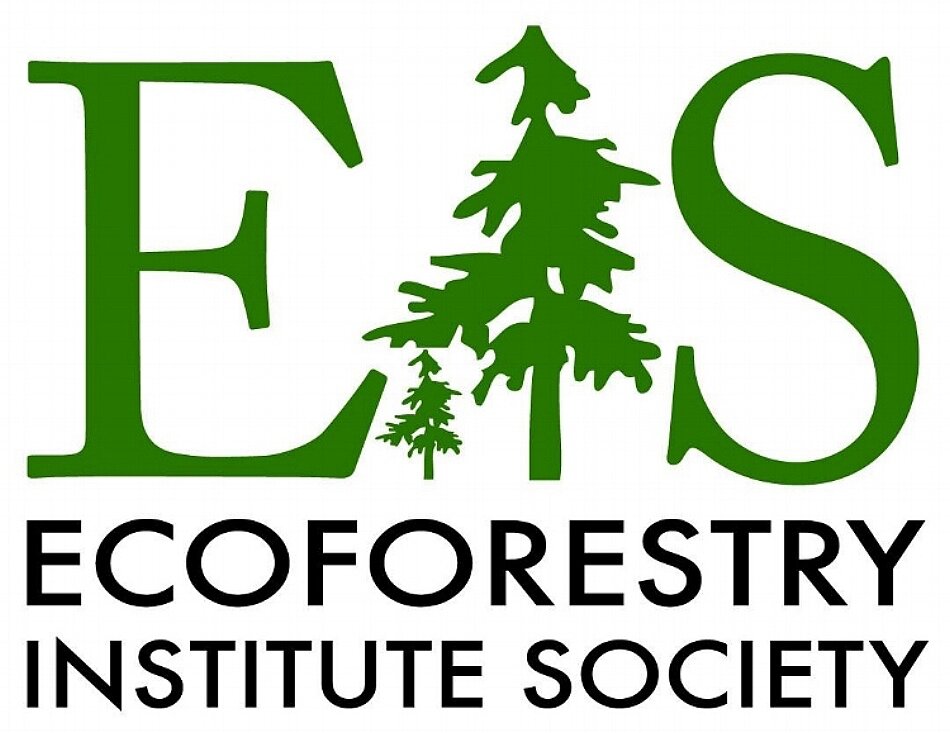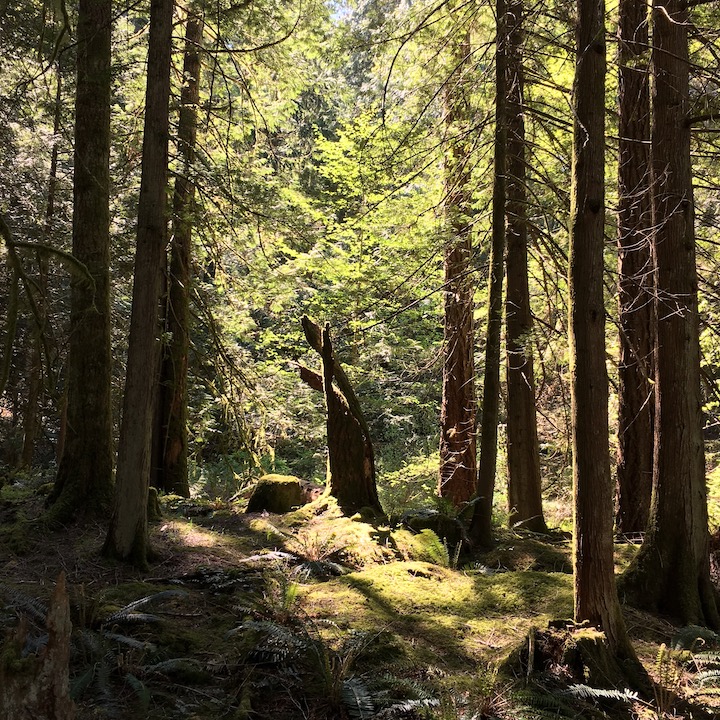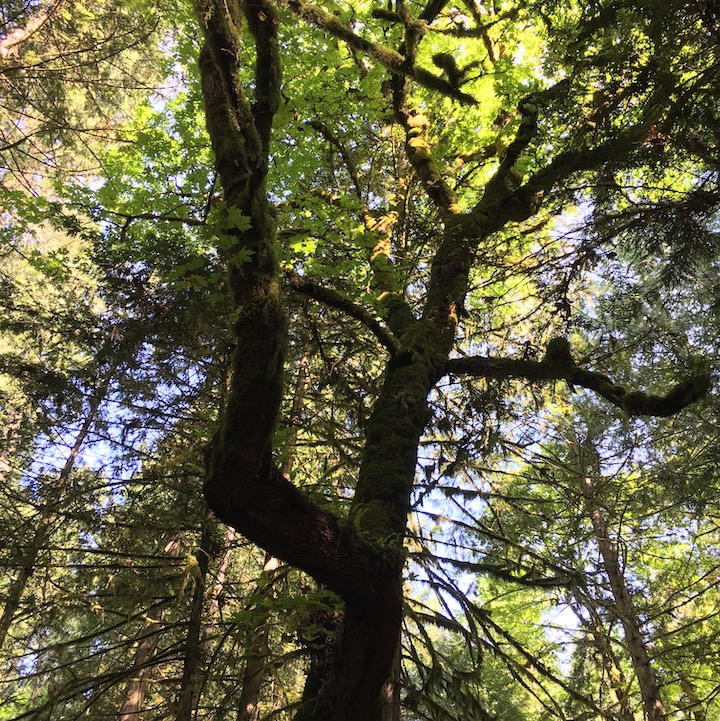Ecoforestry Explained
Ecoforestry is a forest management practice that maintains or restores natural ecosystem richness, complexity, and resiliency, while providing for ecologically appropriate levels of harvest.
Ecological Integrity (the state of being whole, entire, undiminished, including functionality) is the bottom line and the most important goal of management, otherwise there can be no true sustainability of any kind (including timber harvest).
Losing species or dangerously diminishing their natural abundance through forest management is not acceptable. They have intrinsic value and valuable functions in the ecosystem.
Timber is NOT of greater importance than biodiversity, hydrology, climate moderation, soil health, edible plants, recreation etc. The natural world is the basis for our existence and the basis for our economy.
How we practice Ecoforestry at Wildwood
Just like Merv Wilkinson, we endeavor to keep Wildwood as healthy, intact and beautiful as possible while deriving some income from it. We want to be as revolutionary and daring as he was, and will adapt our practices whenever we learn that we should – just as he did. He was interested in pursuing better ways of creating an income from his forest than by selling logs, and so are we.
Our Ecoforestry approach at Wildwood is based on the “Natural Disturbance Type” of the Coastal Douglas Fir (CDF) biogeoclimatic zone to which Wildwood belongs. This particular “Natural Disturbance Type” is characterized by “infrequent stand-initiating events” which historically have been fires returning on average every 200 yrs. This would naturally result in extensive areas of mature and old forest surrounding patches of younger forest.
Today’s reality is pretty much the opposite, just worse, with young forests (less than 80 yrs of age) dominating this “Disturbance Type” and Old Growth (> 250 yrs) occupying less than 1%. This means that species which depend on CDF old growth forests are going extinct. At Wildwood though, we are close to the natural age class distribution and we will let it grow older and let it increase the “dead” wood component (snags, downed trees) to resemble more and more on a small scale what a natural forest would look like in this biogeoclimatic zone. And we will thus store a lot of carbon at Wildwood and make a significant contribution to climate change mitigation in addition to biodiversity conservation.
Other features of our forest management are:
· Our annual timber harvest will not exceed 30% of the actual timber growth rate (which we can determine through our permanent sample plots).
· We carefully choose trees according to our list of ranked selection criteria which focus on ecological integrity and safety.
· We use low impact harvesting techniques and leave branches and tops as well as other low-market-value pieces where the tree fell.
· Logs will be processed at least into lumber at Wildwood.
· Tree species which are less frequent at Wildwood are receiving greater attention for retention.
· The market value of tree species will not influence tree species composition at Wildwood.
· No synthetic chemicals (i.e. fertilizer, herbicides, insecticides, fungicides) will be applied.
· We rely on natural regeneration (seeding from the most successful, old trees).
Introducing Wildwood- a success story from a damaging industry.
Resources
Must Read …
Internal
External Sites
[New] BIV: Leaked report claims B.C. timber harvest is vastly overestimated November 19, 2025
Quennell Lake Watershed Stewardship Society: 2024 Annual Report
From SixMountains and Larry Pynn: In Support of Ecoforestry in North Cowichan Jan. 30, 2023
From Wired Magazine: Why Old-Growth Trees are Crucial to Tackling Climate Change
From Tyee: Preserve Old-Growth Forests to Keep Carbon Where it Belongs
From Yale Environment 360: Why Keeping Mature Forests Intact is KEY to the Climate Fight
Defusing BC’s big, bad carbon bomb: By David Broadland - January 6, 2020 - Focus On Victoria Magazine
David Broadland is the publisher of Focus. He is working with a group of scientists, journalists and citizens to explore the potential for conserving selected BC forests for carbon sequestration, biodiversity conservation and short-distance tourism potential. He welcomes your feedback.
The Earth’s Blanket - Traditional Teachings for Sustainable Living by Dr. Nancy Turner
The Greatest Climate-Protecting Technology Ever Divised - By Brooke Jarvis
Other Eco Organizations
Forestry Books
Salvage Logging and Its Ecological Consequences (Jerry Franklin)
Conserving Forest Biodiversity: A Comprehensive Multiscaled Approach (Jerry Franklin)
Reports & Scientific Papers
Strategic Intelligence: Forests Note: you will be asked to register for login
Sustainable Ecosystem Management in Clayoquot Sound Planning and Practices
Principles and Practices of New Forestry: A Guide for British Columbians
An Ecological Rationale for Changing Forest Management on MacMillan Bloedel’s Forest Tenure
Retention Forestry to Maintain Multifunctional Forests: A World Perspective
Based on the research of Bill Beese, former Forest Ecologist with M & B, now at VIU. A look at the Montane Alternative Silviculture Systems (MASS) site near Campbell River and the research:
Other Ecosystem Studies
Silviculture Treatments for Ecosystem Management in the Sayward (STEMS) Project in Sayward Forest
Demonstration of Ecosystem Management Options (DEMO) Study in US PNW
Diversifying Forest Structure to Promote Wildlife Biodiversity in Western Washington Forests
IDENTIFYING OLD TREES AND FORESTS IN WASHINGTON from WA State DNR
Ecoforestry Around the World
Lübeck: Another Way of Logging
Learn what the City of Lübeck, Germany has done with a 5,000 hectare forest!
Before 1994, this forest would have been logged in the conventional method of using heavy machinery followed by replanting. But since 1994, Lübeck’s chief forester proposed a change in the way it was managed, using a new approach called “close to nature”, which was developed in cooperation with scientists and nature conservationists.
Read more by clicking the link below:









